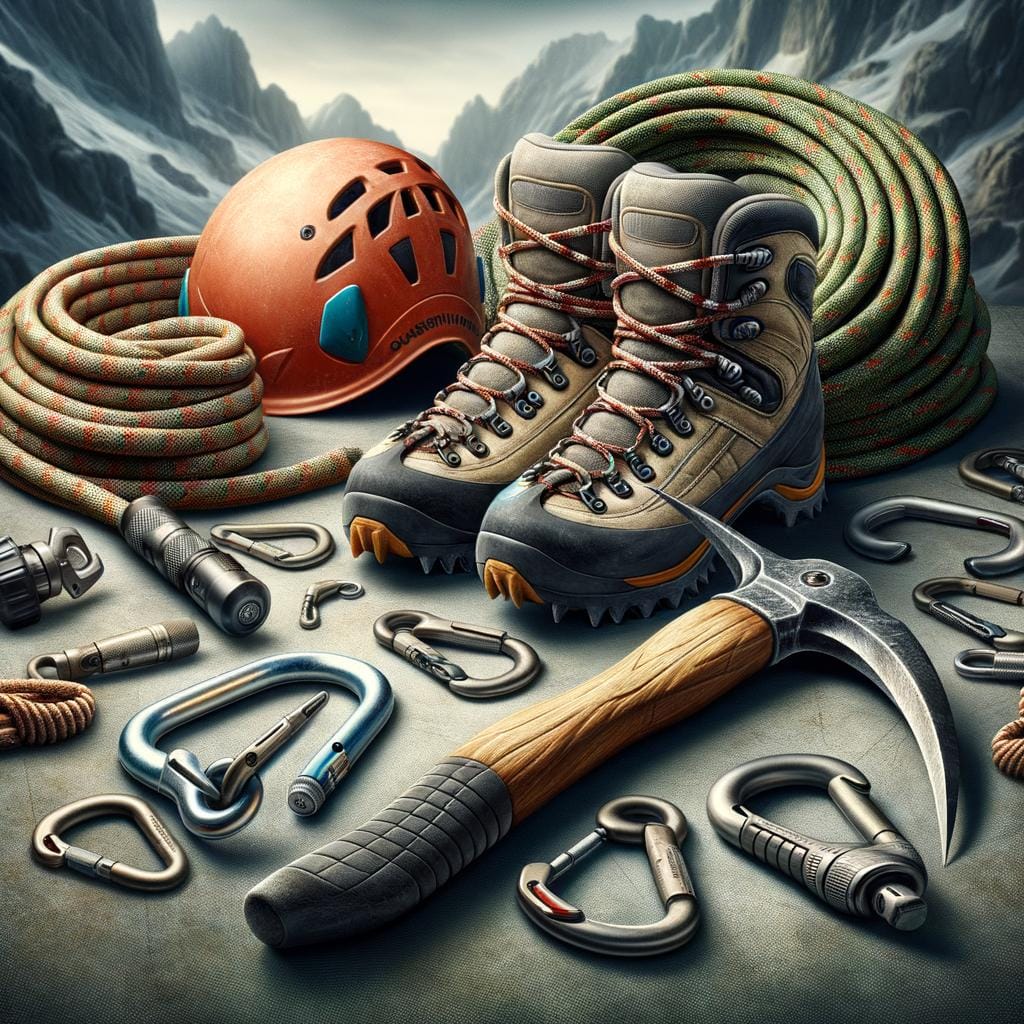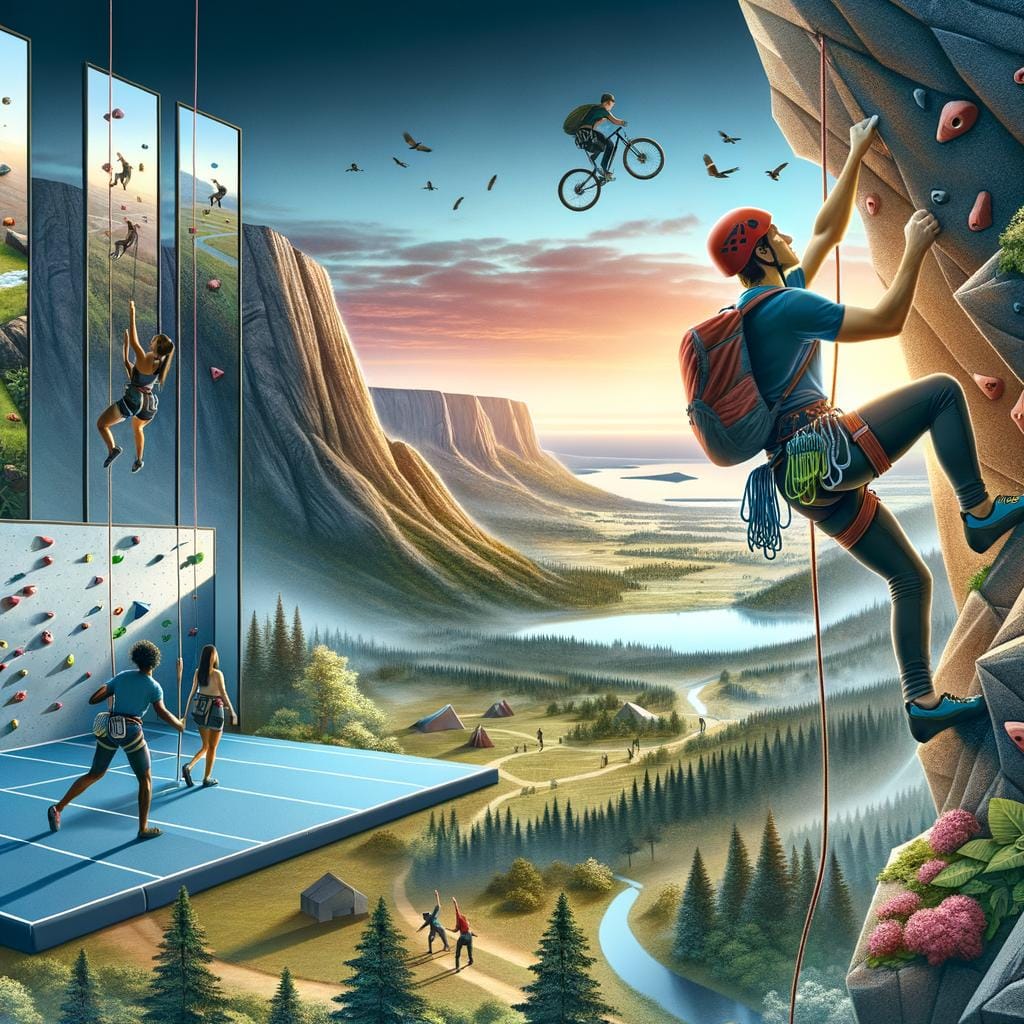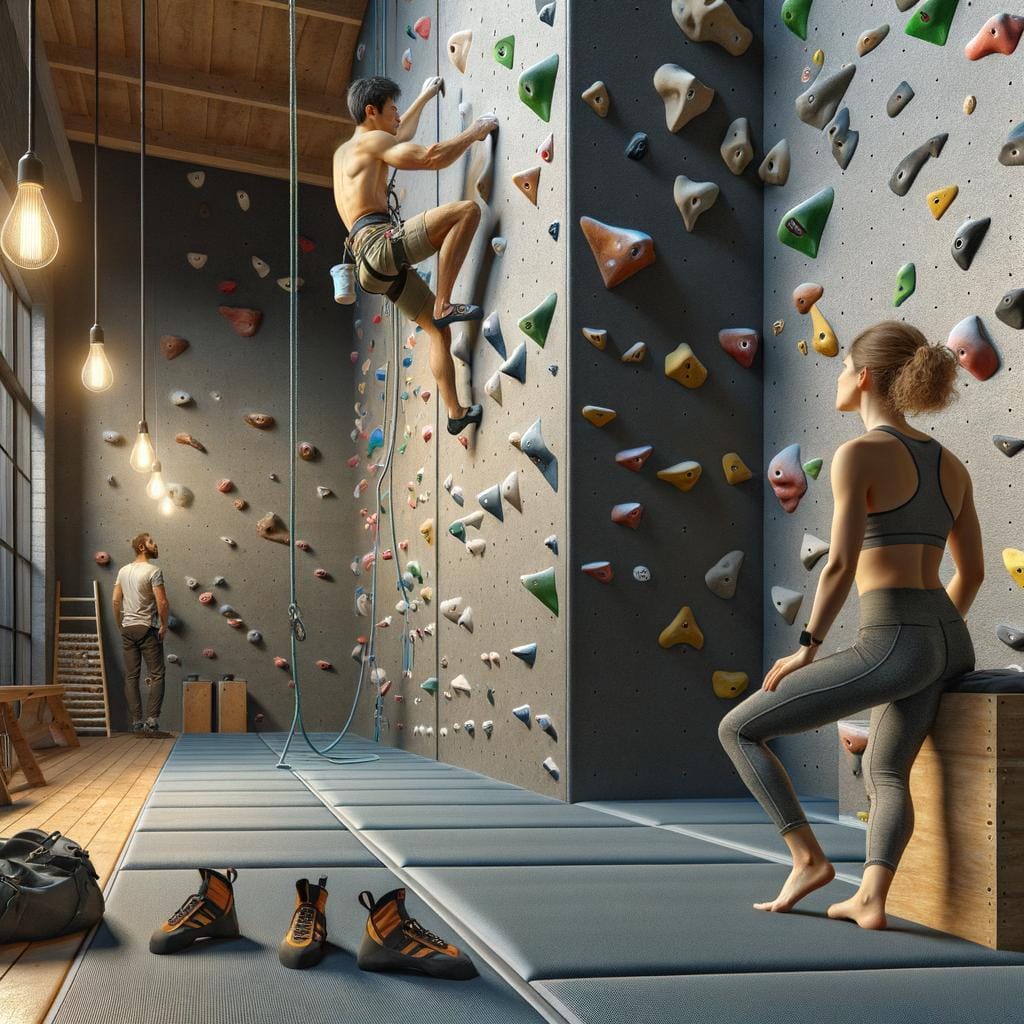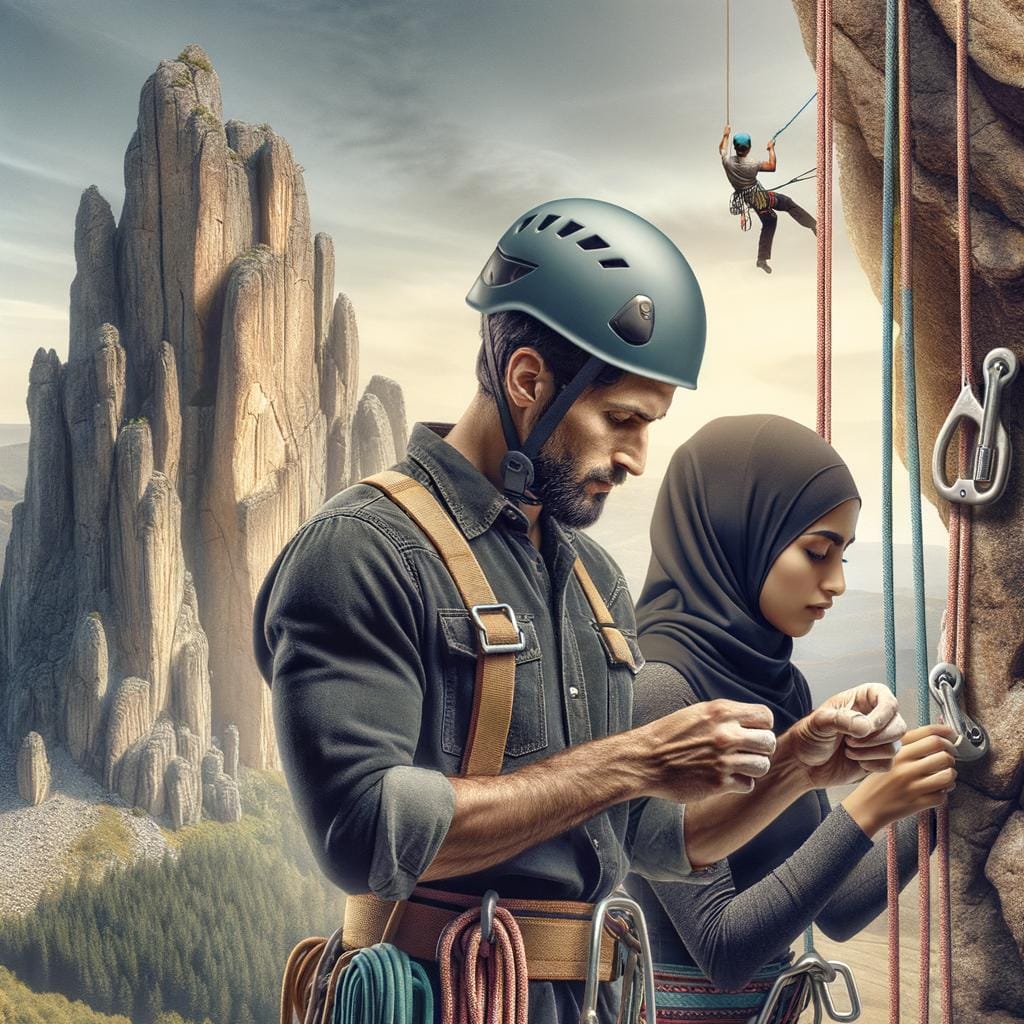Are you new to the world of rock climbing and unsure about where to start with your climbing gear? Look no further. In this beginner’s guide to climbing gear, we will walk you through everything you need to know to kickstart your climbing journey. From essential equipment for indoor climbing to must-have gear for outdoor adventures, we’ve got you covered.
When embarking on your climbing journey, having the right climbing gear is crucial for your safety and success. From climbing shoes that cater to your unique foot type to top-quality harnesses that provide both safety and comfort, each piece of gear plays a vital role in your overall climbing experience. Understanding the importance of each item and how they work together is key to becoming a confident climber.
In the following sections, we will delve into specific aspects of climbing gear such as ropes, protection devices like nuts and carabiners, as well as accessories like chalk bags and helmets. We will also provide tips on choosing the right gear for your needs and how to properly care for your equipment to ensure its longevity.
Whether you’re a seasoned climber looking to upgrade your gear or a newbie taking your first steps on the wall, this guide is sure to help you navigate the world of climbing gear with ease.
Essential Climbing Gear for Indoor Climbing
Indoor climbing is a great way to get started in the world of climbing. Whether you are at a local gym or recreating a rock wall at home, having the right gear is essential for a safe and enjoyable experience. Here is a list of essential climbing gear for indoor climbing:
- Climbing Shoes: Investing in a good pair of climbing shoes is crucial for indoor climbing. Look for shoes that fit snugly without being too tight, providing you with the necessary support and grip on the holds.
- Chalk Bag and Chalk: Keeping your hands dry while climbing is important for maintaining a secure grip. A chalk bag attached to your harness or waist will allow easy access to chalk for re-chalking as needed.
- Harness: While some indoor gyms provide harness rentals, having your own harness ensures proper fit and comfort during your climb. Look for one with adjustable leg loops and waist belt for a customized fit.
Aside from these basic essentials, other items such as belay devices, carabiners, and helmets may be provided by the gym or required depending on their policies. Make sure to familiarize yourself with the gym’s rules and regulations before starting your climb. Remember that even though indoor climbing may seem less risky than outdoor climbing, safety should always be a priority.
While outdoor climbing can offer more challenges and experiences, having the right gear is crucial to ensure safety during your adventures. This includes equipment like quickdraws, ropes, helmets, nuts & camming devices (protective gear against fall)and other protection devices designed to keep you secure while tackling natural rock structures.
Must-Have Climbing Gear for Outdoor Climbing Adventures
Outdoor climbing adventures require a specific set of climbing gear to ensure safety and success. Whether you are tackling a challenging rock face or heading out for a day of bouldering, having the right equipment is essential. From harnesses to ropes, each piece of gear plays a crucial role in your climbing experience.
Essential Outdoor Climbing Gear
When venturing outdoors for climbing, there are a few key pieces of gear that are considered essential. A sturdy climbing harness is at the top of the list, providing support and safety while scaling rocks.
Your choice of ropes is also critical, with dynamic ropes being the preferred option due to their ability to absorb impact in case of a fall. Additionally, having a reliable set of carabiners and belay devices is crucial for securing yourself and your climbing partner during climbs.
Climbing Protection: Nuts, Cams, and Carabiners Explained
One aspect of outdoor climbing gear that cannot be overlooked is protection devices such as nuts, cams, and carabiners. These tools are used to secure climbers as they ascend, creating anchor points that can support weight in case of a fall.
Nuts are passive protection devices that can be wedged into cracks and crevices in the rock, while cams are active devices that use spring-loaded mechanisms to grip onto the rock securely. Carabiners are used to attach these protection pieces to the rope or harness, forming a reliable system that keeps climbers safe on their ascent.
Climbing Accessories for Outdoor Adventures
In addition to the essentials like harnesses and ropes, there are several accessories that can enhance your outdoor climbing experience. Chalk bags are used to keep hands dry and improve grip while climbing on rocky surfaces. Helmets provide protection from falling debris or accidental impacts during climbs.
Other accessories like gloves for crack climbing or route guidebooks can also help climbers navigate outdoor environments more effectively. By investing in high-quality gear and accessories specifically designed for outdoor climbing adventures, you can enjoy a safe and successful climb while exploring natural landscapes.
How to Choose the Right Climbing Shoes for Your Foot Type
When it comes to climbing gear, one of the most crucial pieces of equipment to consider is climbing shoes. Choosing the right pair can significantly impact your performance and overall climbing experience. Each climber’s foot type is unique, so it’s important to understand how to select climbing shoes that will best suit your needs.
Know Your Foot Type
Before selecting climbing shoes, it’s essential to determine your foot type. Are you flat-footed, high-arched, or somewhere in between? Knowing this information will help you choose the right shoe shape and design that will provide the most comfort and support while you climb.
Consider Climbing Style
Another factor to consider when choosing climbing shoes is your preferred climbing style. Different types of climbing (such as sport climbing, bouldering, or trad climbing) may require different features in a shoe. For example, aggressive downturned shoes are suited for overhung routes or harder boulder problems, while flatter shoes are more comfortable for all-day multi-pitch climbs.
Fit and Comfort
Ultimately, the fit and comfort of your climbing shoes are paramount. You want a snug fit that doesn’t cause discomfort or pain but also provides enough support for precise foot placement on the rock. It’s essential to try on multiple pairs and sizes to find the perfect balance between snugness and comfort. Properly fitting climbing gear can enhance your performance on the wall and help prevent injuries related to ill-fitting footwear.
Top 5 Climbing Harnesses for Safety and Comfort
When it comes to climbing, having the right harness can make all the difference in terms of safety and comfort. A climbing harness is a crucial piece of equipment that ensures you are securely attached to the rope while climbing, providing support and protection in case of a fall.
With so many options available on the market, it can be overwhelming to choose the right one for your needs. Here is a list of the top 5 climbing harnesses that stand out for their safety features and comfort:
- Black Diamond Momentum Harness
- Petzl Corax Harness
- Edelrid Jay III Harness
- Mammut Ophir Harness
- Arc’teryx FL-365 Harness
Each of these harnesses offers different features and benefits suited for various types of climbing, whether you are a beginner looking for something versatile or an experienced climber in need of extra support during long routes. Make sure to consider factors such as adjustability, padding, gear loops, and weight when selecting the right harness for your climbing adventures.
In addition to safety and comfort, choosing a harness that fits properly is crucial for an enjoyable climbing experience. It’s essential to try on different models and sizes to find the one that best suits your body type and preferences.
Investing in a high-quality climbing harness can enhance your performance on the wall and give you peace of mind while tackling challenging routes with confidence. Remember that proper care and maintenance of your climbing gear, including your harness, is essential for its longevity and continued safety during climbs.
The Importance of Proper Climbing Ropes and How to Care for Them
Climbing ropes are an essential piece of climbing gear that plays a crucial role in ensuring the safety of climbers during their adventures. When it comes to outdoor climbing, choosing the right climbing rope is vital as it can be a lifeline in case of a fall.
Dynamic ropes are commonly used for rock climbing due to their ability to stretch and absorb the impact of a fall, reducing the force exerted on the climber and their gear. These ropes are designed to provide protection while offering flexibility and durability, making them ideal for various climbing scenarios.
Proper care and maintenance of climbing ropes are essential to prolong their lifespan and ensure optimal performance. One key aspect of caring for climbing ropes is to inspect them regularly for any signs of wear and tear, such as fraying, cuts, or abrasions.
It is important to pay attention to the middle mark on the rope, which helps climbers identify when they have reached halfway during a climb. Additionally, storing climbing ropes properly in a cool, dry place away from direct sunlight and chemicals can help prevent damage and extend their longevity.
In addition to regular inspection and proper storage, climbers should also follow proper handling techniques when using climbing ropes. Avoid stepping on the rope or allowing it to come into contact with sharp edges or abrasive surfaces that could cause damage.
Proper coiling and uncoiling techniques can also help prevent twists and tangles that could weaken the rope over time. By taking these precautions and following best practices for care and maintenance, climbers can ensure that their climbing ropes remain safe and reliable for many adventures to come.
Climbing Protection
When it comes to climbing, protection is essential for safety and security. Climbing protection refers to the equipment used to secure a climber’s progress on a route, preventing falls and minimizing risks. Nuts, cams, and carabiners are crucial pieces of climbing gear that play a significant role in protecting climbers during their ascent.
Nuts, also known as chocks or nuts, are small pieces of metal that can be wedged into cracks in the rock to provide anchor points for the climber’s protection. They come in different sizes and shapes to fit various crack sizes. Cams, on the other hand, are devices with spring-loaded lobes that expand when placed in cracks, creating solid anchor points. These mechanical pieces of gear are versatile and can be adjusted to fit different crack shapes.
Carabiners are fundamental components of any climber’s gear kit. These metal loops with a spring-loaded gate are used to quickly and securely connect various elements of a climbing system together. Carabiners come in different shapes and styles for specific purposes such as locking carabiners for extra safety measures. When selecting carabiners for climbing, it is vital to consider factors such as weight, shape, gate opening size, and strength rating depending on the intended use.
| Types of Climbing Protection | Description |
|---|---|
| Nuts | Small metal pieces wedged into cracks for anchor points |
| Cams | Spring-loaded devices creating anchor points in cracks |
| Carabiners | Metal loops with spring-loaded gates for connecting climbing systems |
Climbing Accessories
Helmets are another vital accessory when it comes to climbing safety. Helmets protect your head from falling debris, accidental knocks against the rock wall, or even unexpected falls. Be sure to choose a helmet that fits securely on your head without any unnecessary movement. Look for helmets with adjustable straps and ventilation to ensure comfort throughout your climb.
In addition to chalk bags and helmets, there are other accessories that can enhance your climbing experience. Items such as gloves, knee pads, and finger tape can provide additional protection and support during challenging climbs. It’s important to assess the specific needs of your climb and choose accessories that will contribute to both safety and comfort while scaling the rock face.
| Climbing Accessories | Importance |
|---|---|
| Chalk Bags | Keeps hands dry and improves grip |
| Helmets | Protects head from debris and falls |
| Gloves, Knee Pads, Finger Tape | Additional protection and support during climbs |
Climbing Gear Maintenance
In conclusion, maintaining your climbing gear is crucial for ensuring its longevity and your safety during climbs. Regular inspection and maintenance of your equipment can help prevent accidents caused by wear and tear. Staying proactive in caring for your climbing gear will not only extend its lifespan but also give you peace of mind while you’re on the wall.
One of the most important aspects of climbing gear maintenance is checking for any signs of damage or weakness before each use. This includes inspecting harnesses, ropes, carabiners, and other essential equipment for fraying, tears, or deformation. It’s vital to address any issues immediately by either repairing or replacing the damaged gear to avoid potential risks while climbing.
Furthermore, proper storage and cleaning techniques are essential for preserving the quality of your climbing gear. Ensuring that your equipment is stored in a cool, dry place away from direct sunlight can help prevent degradation due to exposure to heat and moisture.
Additionally, following manufacturer guidelines for cleaning ropes and harnesses can prevent dirt buildup and prolong the life of your gear. By taking the time to maintain your climbing gear regularly, you can enjoy many safe and successful climbs in the future.
Frequently Asked Questions
What Is Climbing Equipment Called?
Climbing equipment is commonly referred to as “gear” or “climbing gear.” This encompasses a wide range of tools and accessories that climbers use to navigate, ascend, and secure themselves while climbing.
Which Gear Is Best for Climbing?
The best gear for climbing largely depends on the type of climbing being done. For traditional climbing, essential gear includes harnesses, ropes, carabiners, and nuts or cams for protection. For sport climbing, quickdraws are essential. Additionally, having a well-fitted helmet is crucial for safety in all types of climbing.
What Is Essential Climbing Gear?
Essential climbing gear typically includes a harness, rope, carabiners, belay device, helmet, climbing shoes, chalk bag with chalk, and proper clothing for the conditions. Depending on the type of climbing (sport vs trad) additional gear like cams/nuts or quickdraws may be necessary for protection and anchoring. Safety should always be the top priority when selecting essential climbing gear.

An avid outdoor enthusiast, writer, and environmental advocate who has spent over two decades exploring the world’s most breathtaking landscapes. With a background in environmental science and a passion for adventure, Frances combines her love for nature with her talent for storytelling to inspire others to embark on their own outdoor journeys.





